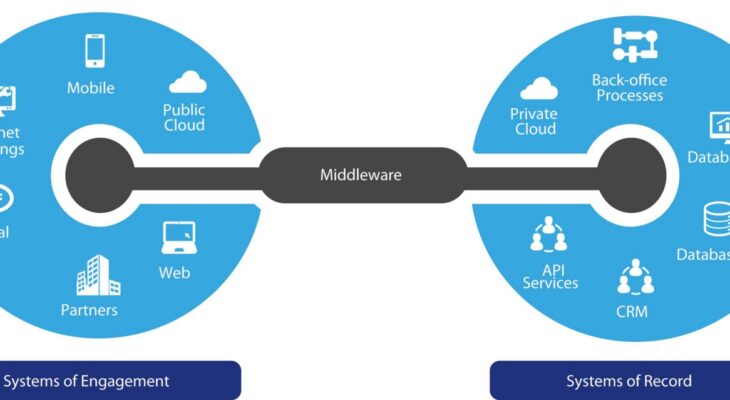Middleware is a software layer that sits between an operating system and the applications running on it. It provides a common set of services and functions that applications can use, such as database access, messaging, authentication, and more. This allows developers to focus on building their applications, rather than worrying about the underlying infrastructure.
Benefits of Using Middleware
There are several benefits to using middleware in a software development project. Some of the most important ones include:
Improved scalability: Middleware can help applications scale more easily, by providing a set of common services that can be shared across multiple applications. This allows developers to add new features and capabilities to their applications without worrying about the underlying infrastructure.
Enhanced security: Middleware can help protect applications from security threats, by providing authentication and other security services. This can help prevent unauthorized access to sensitive data, and protect against attacks such as SQL injection and other types of malware.
Improved performance: Middleware can help applications perform better, by providing optimized services and functions that are designed to be efficient and scalable. This can help reduce the amount of time it takes for applications to respond to user requests, and improve overall user experience.
Enhanced integration: Middleware can help applications integrate with other systems and services, by providing a common set of interfaces and protocols. This can make it easier for developers to connect their applications to other systems, and facilitate data sharing and collaboration.
Examples of Middleware
There are many different types of middleware solutions available, each with its own unique set of features and capabilities. Some of the most common examples of middleware include:
Database middleware: This type of middleware provides a common set of services for accessing and managing databases. This can include support for SQL and other database languages, as well as tools for importing and exporting data.
Message-oriented middleware: This type of middleware provides a common set of services for sending and receiving messages between applications. This can include support for messaging protocols such as JMS and AMQP, as well as tools for routing and transforming messages.
Integration middleware: This type of middleware provides a common set of services for connecting applications to other systems and services. This can include support for various integration patterns and protocols, as well as tools for managing and monitoring integration processes.
SnapLogic as an Example Middleware Solution
One company that offers a middleware solution is SnapLogic. Their platform is a cloud-based integration platform that enables developers to connect their applications to other systems and services.
SnapLogic provides a set of pre-built connectors that make it easy for developers to connect their applications to popular cloud services such as Salesforce, Workday, and Amazon Web Services. The platform also includes a drag-and-drop interface that allows developers to create integration flows without writing any code.
In addition to providing connectivity and integration capabilities, SnapLogic also offers a range of other middleware services, including data transformation, data governance, and API management. This makes it a comprehensive solution for developers who need to integrate their applications with other systems and services.
Conclusion
Middleware is an important layer of software that sits between an operating system and the applications running on it. It provides a common set of services and functions that applications can use, making it easier for developers to build and scale their applications.

